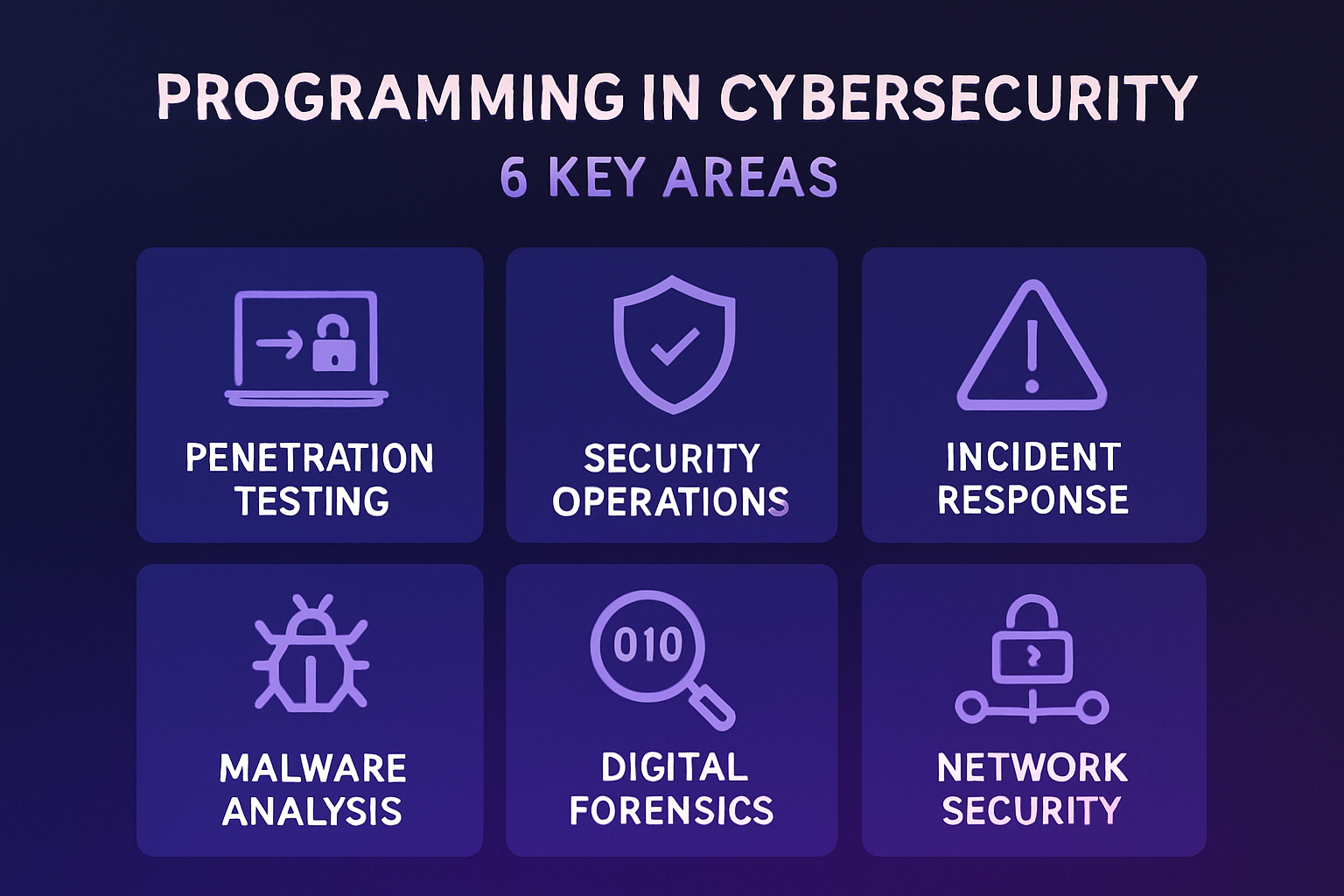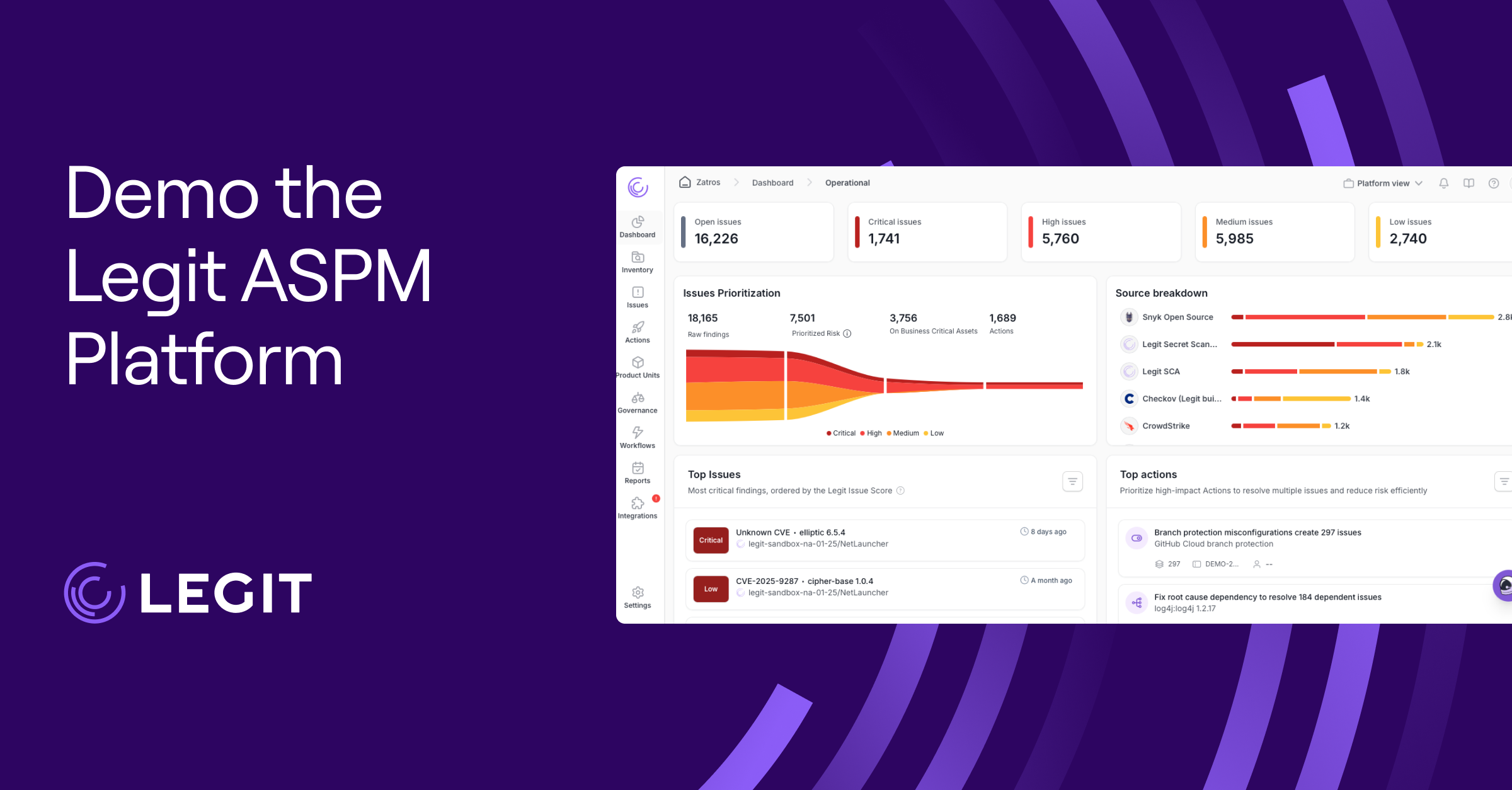Cybersecurity and programming go hand in hand. Whether you're analyzing malware, writing custom tools, or automating detection workflows, knowing how to code gives you an edge.
But there’s no one-size-fits-all programming language to learn. Different roles call for different skills. A security analyst might lean into scripting to speed up investigations, while a penetration tester might need low-level control for crafting exploits. The best programming language for cybersecurity is about what helps you solve relevant problems.
This article breaks down how programming fits into cybersecurity, highlights the most relevant languages, and helps you determine which makes the most sense for your role or team.
Programming in Cybersecurity: 6 Key Areas

From developing tailored detection tools to reverse-engineering malware, coding cybersecurity workflows lets you go beyond default tools and take a more targeted approach to security challenges. This control can mean the difference between reacting late and responding in real time. It sharpens your ability to understand threats, build defenses, and respond with precision.
Whether you're creating automation to save time or digging into memory to uncover hidden exploits, understanding a cybersecurity programming language opens doors across the field. Here are six key areas where programming can elevate your impact, each calling for different skills, tools, and languages.
1. Penetration Testing
Penetration testers, or pentesters, rely on programming to go beyond what commercial tools can do. They can write custom exploits for niche vulnerabilities, build payloads that adapt to specific systems, and script new attack techniques.
2. Security Operations
In security operations, automation is everything. Coding allows analysts to create custom log parsers, enrich alerts, and uncover threats that fly under the radar of generic tools. SecOps teams also use scripting to develop tailored responses to unusual patterns, enabling faster decision-making in complex environments. This kind of automation plays a significant role in application security in DevOps, where scale and speed demand more than just off-the-shelf tools.
3. Incident Response
When incidents hit, time is short. Programming skills make triaging threats, analyzing system behavior, and automating containment easier. Whether it’s a script that isolates a compromised endpoint or a tool that parses large volumes of forensic data, code gives responders the flexibility to act fast and dig deep.
4. Malware Analysis
Malware analysts use code to dissect how threats behave, repealing what the malware is doing and how to stop it. Practices like writing tools for dynamic analysis, generating custom detection signatures, or reverse-engineering obfuscated binaries all require hands-on experience with cybersecurity programming languages.
5. Digital Forensics
In digital forensics, programming simplifies evidence collection and speeds up analysis. Security analysts can write scripts to automate artifact extraction, customize timelines, and even build visualizations that help make sense of complex forensic data during investigations.
6. Network Security
Understanding how to code enables the creation of adaptive defenses. Analysts can develop behavioral models that flag anomalies in traffic, write detection rules tuned to their environment, and even automate responses that shift with the network’s behavior.
Turn language skills into stronger AppSec
AI‑native ASPM that prioritizes real risk across Python, Java, JS, Go, and more.
10 Best Programming Languages for Cybersecurity
![]()
No single language covers everything, but some have proven especially useful across cybersecurity roles. Whether reverse engineering malware or developing secure applications, your chosen language can speed up workflows and expand capabilities.
Here's a breakdown of the top programming languages for cyber security and their use cases in the field.
1. Python
Python is a powerhouse in cybersecurity thanks to its readability and massive collection of libraries. If you look out for it, you’ll see it everywhere, from scripting and automation to network scanning and malware analysis.
If you're new to coding cybersecurity tools, Python is a wise first choice. It’s widely used by pen testers, analysts, and engineers alike, and tools like Scapy and the Requests library make it easy to build your utilities.
2. JavaScript
JavaScript dominates web application security, especially for finding and exploiting browser-based flaws like cross-site scripting (XSS) or cross-site request forgery (CSRF). On the flip side, it's also used defensively—monitoring document object model (DOM) changes, injecting security headers, or building client-side protections. And with Node.js in the picture, JavaScript now handles both front-end and back-end tasks in security testing workflows.
3. Java
Java runs behind many enterprise systems, Android apps, and secure backend services. Security teams often use Java when reviewing large-scale systems or building defenses into enterprise applications due to its strong type system and sandboxing capabilities.
4. C
C gives you direct access to memory and hardware, which makes it ideal for vulnerability research, exploit development, and performance-sensitive tooling. You’ll often need to work in C when building low-level security tools or analyzing legacy systems with memory safety flaws like buffer overflows.
5. C++
C++ adds object-oriented design to C’s raw power. It’s used in everything from game engines to secure applications—anywhere speed and efficiency matter. In cybersecurity, professionals turn to C++ for reverse engineering, malware development, and scenarios that demand deep system integration.
6. Bash
If you’re working on Linux systems, Bash is non-negotiable. It's not a full programming language, but it's the fastest way to automate tasks like log analysis, file monitoring, and permission auditing. Bash is especially useful for writing quick scripts during penetration testing or incident response on Unix-based systems.
7. PowerShell
PowerShell offers deep access to Windows environments. Whether you're hunting threats, deploying forensic collection scripts, or managing Active Directory, it's the go-to for blue and red teams working in Microsoft ecosystems. It also enables automation across systems at scale, saving time during investigations or audits.
8. SQL
Understanding SQL is necessary for anyone securing databases or building web apps. It’s the backbone of data storage, which means it’s also a prime target for attackers through SQL injection and poor access control. Knowing how queries work and how to secure them prevents some of the most common breaches tied to data exposure.
9. Assembly
Assembly sits at the lowest level and gives you the clearest look at what’s happening inside binaries. It’s not easy to learn, but it’s essential for reverse engineering and malware analysis. If you’re tearing apart obfuscated code or working with exploits that interact directly with the CPU, this is the language to use.
10. Rust
Rust is gaining momentum fast in cybersecurity circles. Unlike C or C++, Rust avoids common memory issues like buffer overflows by design. It’s a strong choice for building secure system-level applications without sacrificing performance.
As more security tooling shifts toward cloud-native environments, Rust’s memory safety guarantees make it a smart pick for building resilient infrastructure. It’s increasingly part of the toolkit when addressing emerging trends in cloud application security.
Additional Languages to Know
Other notable languages also have their place in cybersecurity, depending on your environment and goals. While they may not be the first languages you reach for, they’re worth being aware of, especially if you're working with older systems or specific toolsets.
Ruby is tightly integrated with tools like Metasploit, making it useful in offensive security work. PHP still powers many web applications, so understanding its quirks can help you identify and exploit common vulnerabilities. Many security professionals also favor Perl's strong text processing and scripting capabilities, especially when working with legacy systems or analyzing logs.
Choosing the Right Programming Language
When deciding what coding language to learn for cybersecurity, the right answer depends on your role, goals, and the problems you want to solve. A penetration tester might lean toward Python or Bash for scripting and automation, while someone focused on application security might need a solid grasp of Java, JavaScript, or SQL.
It's also about choosing a cybersecurity language that matches your environment. If you're securing cloud-native applications, Rust or Go might offer the memory safety and performance you want. And if you’re working with legacy systems, you’ll likely see Java and C++ in the mix.
You might feel overwhelmed by all the options, but focusing on the ones that match your goals is what matters. Start with a language that aligns with your target role, get hands-on, and build from there.
Secure Your Code with Legit Security
Legit Security integrates into your software delivery pipeline to provide visibility into vulnerable dependencies, regardless of the language your team uses.
Improving Code Security With Legit Security
Programming skills allow you to analyze threats, automate tasks, and build stronger defenses. But secure coding takes more than knowing the right language. It’s about writing code under pressure across frameworks, systems, and pipelines.
Whether using Python for automation, JavaScript for web security, or Rust for safe systems programming, every language brings risks and requirements. Legit Security helps you stay ahead of those risks. It integrates into your software delivery pipeline and offers clear visibility into insecure coding practices, exposed secrets, and vulnerable dependencies—regardless of which language your team is working in.
Legit makes it easier to enforce secure development standards from code to cloud, without slowing your teams down. Request a demo to learn more.
Download our new whitepaper.


